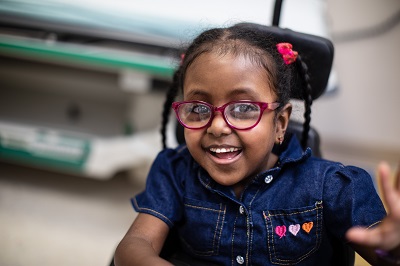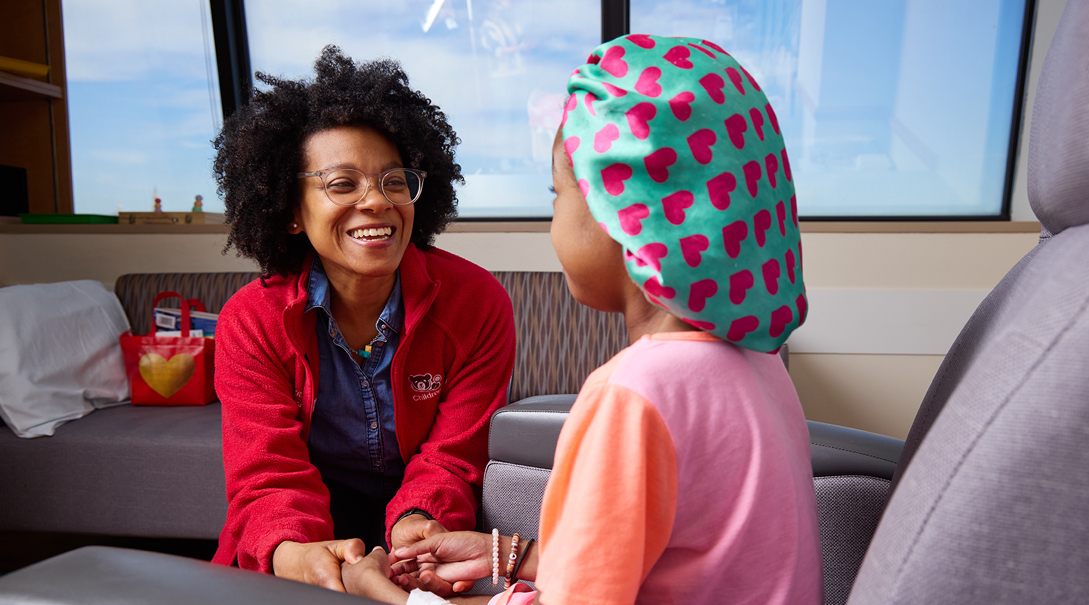Condition
Pediatric Spinal Muscular Atrophy
What You Need to Know
Spinal muscular atrophy is a genetic disease that affects the motor nerve cells in the spinal cord, resulting in progressive muscle wasting and weakness. It typically begins in infancy or childhood years and affects about 1 in 11,000 babies.
Key Symptoms
The symptoms of spinal muscular atrophy in children may vary depending on the type of disease. Common symptoms may include:
- Muscle weakness
- Cognitive delay
- Trouble breathing
Diagnosis
Doctors typically diagnose spinal muscular atrophy by:
- Genetic tests
- Blood tests
- Muscle biopsy
- Electrodiagnostic studies (EMG/nerve conduction study)
Treatment
Treatment may include:
- Respiratory support and breathing treatments
- Feeding and communication therapy
- Physical therapy and rehabilitation
Schedule an Appointment
Our pediatric specialists provide personalized care for your child’s physical, mental and emotional health needs. Meet our providers and schedule an appointment today.
Frequently Asked Questions
What causes spinal muscular atrophy in children?
What are the symptoms of spinal muscular atrophy in children?
How is spinal muscular atrophy diagnosed in children?
How is spinal muscular atrophy treated in children?
Autosomal Recessive Inheritance
Spinal muscular dystrophy is an autosomal recessive disease. This means that while a patient's family may not have a history of having this condition, each parent may be carrier of the same mutated gene, causing the condition to be present in their child. In this video, Hallie Andrew, MS, a genetic counselor at Children's National, explains in further detail.

Providers Who Treat Spinal Muscular Atrophy
Spinal muscular atrophy is treated the staff of the Neuromuscular Medicine Program, which includes a wide variety of specialists.
Celebrating Stellar Staff
At Children's National, more than 8,000 dedicated employees provide patients with world-class care and make new discoveries in pediatric medicine. We are proud to introduce you to a few staff members who exemplify our commitment to improve the health and well-being of children and their families.
Departments that Treat Spinal Muscular Atrophy

Neuromuscular Medicine Program
The Neuromuscular Medicine Program leverages the expertise of a multidisciplinary teams, cutting-edge research and innovative technologies to care for a spectrum of neuromuscular conditions affecting children from infancy to age 21.

Help Kids and Make a Difference
Invest in future cures for some of life's most devastating diseases. Give today to help more children grow up stronger.








